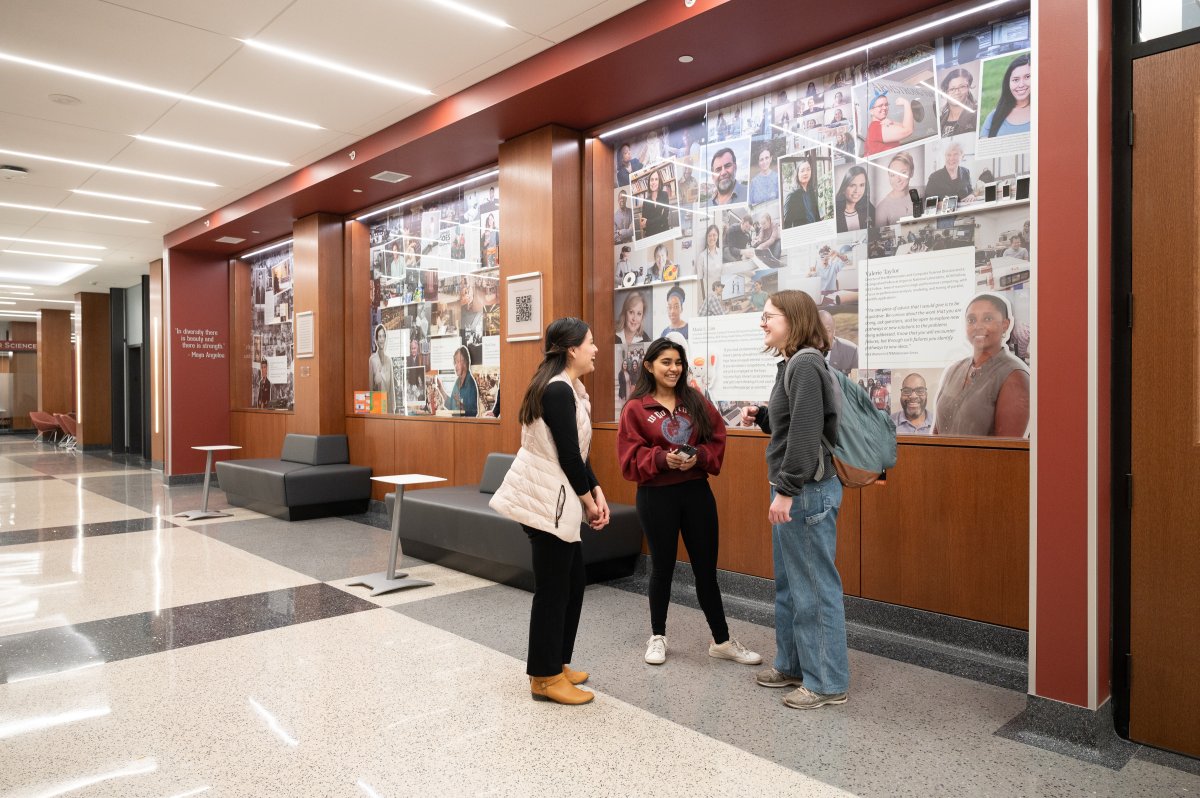Lind Hall Diversity Wall Highlights Vibrant History and Bright Future of Computer Science

This January, the Department of Computer Science & Engineering opened a new student services center in Lind Hall. The newly renovated space is a one-stop-shop for students to get advising assistance, meet with instructors and teaching assistants, and study collectively with peers. Most importantly, the third floor of Lind Hall now features the Diversity Wall, which highlights the computer science contributions of marginalized groups throughout history.
The Lind Hall Diversity Wall was spearheaded by CS&E teaching professor Shana Watters. The goal of the project was to commemorate the history of computer science and to highlight those whose contributions were silenced and not properly recognized throughout history. Watters explains that the inspiration of this wall was to represent all peoples of gender, race, and ethnicity who have contributed to computer science as a field.
“I always felt that representing a field as being one slice, even though it's the majority, was wrong,” Watters said. “There has recently been a push to have diversity and inclusion prioritized within the Department and University. If we really believe this, then why don't we present a history that looks different from what we've previously been presented with, because we've been here from the very beginning. In fact, women were the first programmers, and yet there was nothing to really show that.”

Watters and team worked closely with the Charles Babbage Center, an institute of the University of Minnesota that supports the historical record keeping of computer science, to determine who to feature on the wall. The project itself took hundreds of hours scouting through artifacts and putting names to faces. All of the time and effort was to create an educational and relatable experience for the viewers. The wall aims to represent the true sense of the field with as many influential contributors as possible. Especially those that may not have been as represented in the past.
“When you see young women looking at the wall and saying, ‘I actually can see myself now in a concrete way,’ it’s a wonderful experience,” Watters said. “It’s not fair that they don’t typically see their own representation. Most of the time when women were displayed in a picture with a machine, people thought that they were here to present the computer, not their role as a programmer. Now, they are finally starting to get the recognition that they deserve.”
The wall has three panels that follow the history of the field throughout time. The third panel of the wall is predominantly dedicated to those affiliated with the University of Minnesota. This includes both professors and alumni and their contributions to computer science.
“This wall is a true representation of our field,” Watters concludes. “That includes all the people that were involved, not just the representation of what we've always considered to be the majority. We still value the majority. We just wanted everyone to be included and to be acknowledged for their work.”
Learn more about the Lind Hall Diversity Wall and its featured contributors on the CS&E website, and check it out on the third floor of Lind Hall!